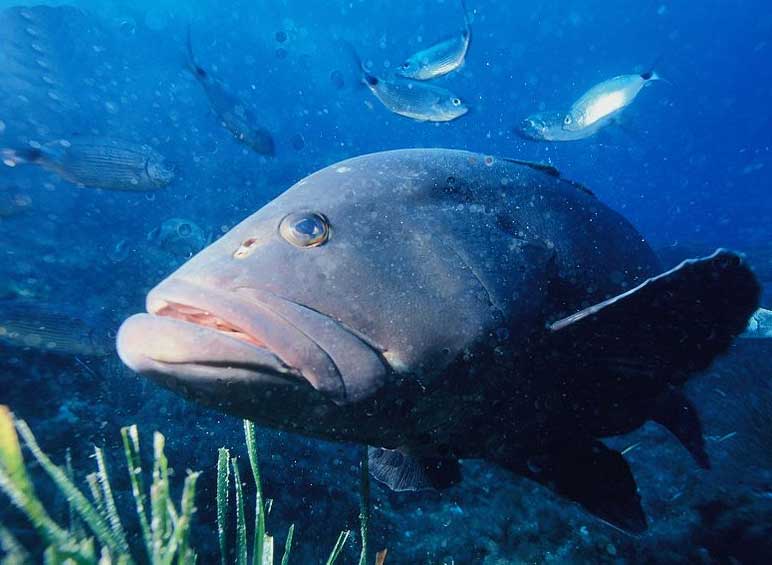Epinephelus marginatus (*) Cladus: Eukaryota Name Epinephelus marginatus (Lowe, 1834) Vernacular names The Dusky Grouper (Epinephelus marginatus) is the best known grouper of the Mediterranean Sea and North Africa coast. It is said to have the best taste of all Mediterranean fishes. The Dusky Grouper has a big body with a big mouth. One long dorsal fin and a rounded tail. Its color varies from brown to green depending on the season and the age. It is green during its juvenile phase. The adult is upper brown with yellow spots and lower yellow. On the Operculum there are three spines. The dusky grouper is a solitary fish. It likes to live alone in rocks, at depths from the coast to 300 meters, but it's rare to find it below 60 meters. It has a barometric distribution, where the younger specimens are found near the coast and the older ones at the depths. It normally has one cave considered as home and several other caves as temporary refuges. Its home has a minimum of two exits, and a size slightly bigger than the grouper, so no bigger animal can enter in. In case of biting attack or other force to extract it, the grouper opens its mouth, and the operculum spines wedge it inside the cave. It can be found in the Mediterranean, the African west coast and the coast of Brazil. It is rare in the waters of the western Indian ocean, Uruguay, Argentina, north of France and the British Isles. It is a protogynous hermaphrodite, i.e. the young are predominantly female but transform into males as they grow larger. Reproduction normally takes place between the summer months. It feeds mainly on other fish, crabs and octopus. It is very greedy and one of the major predators in the Mediterranean sea. Fishing In some countries the dusky grouper is considered a delicacy. Referring to its preference among restaurant guests, the Spanish say 'De la mar el mero y de la tierra el carnero' (From the sea the dusky grouper, from the land the lamb). It normally grows to lengths of between 50 and 100 cm, and between 3 to 10 kg. But it is not rare to find exemplars of more than 40 kg. It can grow up to 150 centimeters in length and 60 kilograms in weight. Froese, Rainer, and Daniel Pauly, eds. (2007). "Epinephelus Marginatus" in FishBase. July 2007 version.
Source: Wikipedia , Wikispecies: All text is available under the terms of the GNU Free Documentation License |
|

